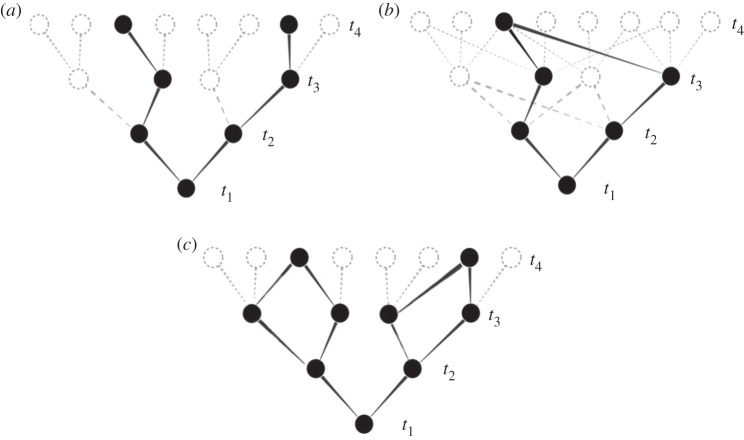Figure 1.
(a) A radically contingent system in which outcomes (morphological, functional or relational) depend on improbable events occurring during the evolutionary path under consideration. For example, at t2, some paths are not taken (dashed lines) owing to non-replicable events, causing a number of evolutionary outcomes to become inaccessible at t3. Conversely, (b) a robustly convergent system in which many outcomes are still accessible from even very distant evolutionary trajectories. For example, very divergent lineages at t3 are still able to converge on the same evolutionary outcome at t4. (c) A mixed contingent/convergent system that exhibits path-independence and predictability at finer grains of resolution (reflecting evolutionary iteration within the developmental parameters of orders, classes and phyla), but exhibiting path-dependence and unpredictability when viewed at courser grains (e.g. across phyla or the whole of animal life). Such mixed systems are consistent with and arguably predicted by a Gouldian view of life that accords theoretical primacy to internal developmental constraints. This underscores the problem with interpreting all evolutionary repetitions, and even certain impressive convergences, as counterexamples to the RCT.

